
Blue English Bulldogs are a unique and captivating breed that has gained popularity in recent years. With their striking blue coat and distinctive appearance, these dogs are sure to turn heads wherever they go. But there’s more to these adorable canines than just their looks. In this article, we’ll delve into everything you need to know about Blue English Bulldogs, from their history and characteristics to their care and temperament.
First and foremost, it’s important to understand that Blue English Bulldogs are not a separate breed, but rather a rare color variation of the traditional English Bulldog. The blue coloration is caused by a dilution gene, which affects the pigmentation of the coat. As a result, these Bulldogs have a stunning bluish-gray coat that sets them apart from their counterparts.
In addition to their unique coat color, Blue English Bulldogs share many of the same characteristics as their non-blue counterparts. They are known for their friendly and affectionate nature, making them excellent family pets. Despite their muscular build, these dogs are surprisingly gentle and patient, especially with children. They are also known for their loyalty and protective instincts, making them great guard dogs.
When it comes to care, Blue English Bulldogs require regular grooming to keep their coat healthy and shiny. They have a short and dense coat that is relatively easy to maintain, but they do shed moderately. Brushing their coat once or twice a week and bathing them as needed will help keep their coat in top condition. Additionally, regular exercise and a balanced diet are essential to keep these dogs healthy and prevent obesity, as they have a tendency to put on weight.
About the English Bulldog Breed
The English Bulldog is a medium-sized breed known for its distinctive appearance and gentle temperament. Originating in England, these dogs were initially bred for bull-baiting, a popular sport in the 18th century. However, as bull-baiting was eventually banned, the breed’s purpose shifted to being a companion and family pet.
The English Bulldog is characterized by its muscular build, broad head, and wrinkled face. They have a short, smooth coat that comes in various colors, including brindle, fawn, and white. Their distinctive features include a pushed-in nose, loose skin, and a prominent underbite.
Despite their intimidating appearance, English Bulldogs are known for their friendly and affectionate nature. They are loyal and devoted to their families, making them excellent companions. They are also great with children and get along well with other pets.
English Bulldogs have a calm and laid-back temperament, making them suitable for apartment living. They are not particularly active dogs and are content with moderate exercise. However, they can be prone to obesity, so it’s important to monitor their diet and exercise levels.
This breed requires regular grooming to maintain their coat and prevent skin issues. Their facial wrinkles need to be cleaned regularly to avoid infections. English Bulldogs are also prone to certain health problems, including respiratory issues, hip dysplasia, and skin allergies.
Why Blue English Bulldogs are Special
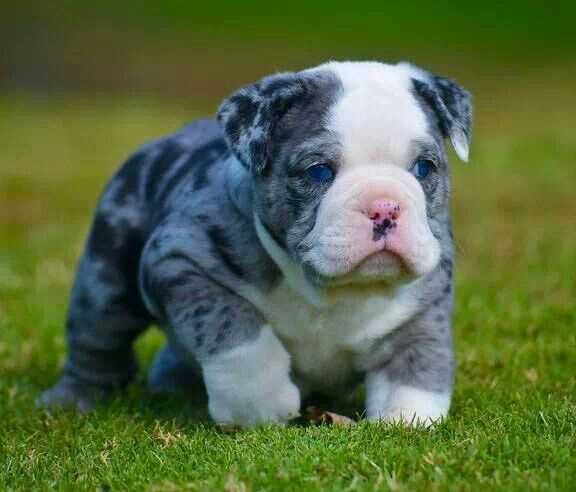
Blue English Bulldogs are a unique and rare breed that stands out from the traditional English Bulldog. Their striking blue coat color sets them apart and makes them highly sought after by dog enthusiasts and collectors.
The blue color in these Bulldogs is a result of a dilution gene that affects the pigmentation of their fur. This gene causes a reduction in the production of black pigments, resulting in a grayish-blue coat. The shade of blue can vary, ranging from a light grayish-blue to a deep steel blue.
Not only do Blue English Bulldogs have an eye-catching appearance, but they also have a distinct personality that makes them special. They are known for their gentle and affectionate nature, making them excellent family pets. Despite their muscular build and strong appearance, they are incredibly loving and loyal companions.
These Bulldogs are also known for their intelligence and adaptability. They are quick learners and can be easily trained, making them suitable for various activities and tasks. Whether it’s obedience training, agility competitions, or simply being a well-behaved family pet, Blue English Bulldogs can excel in any role.
Another reason why Blue English Bulldogs are special is their health. While English Bulldogs, in general, are prone to certain health issues, such as breathing difficulties and joint problems, the blue coloration does not affect their overall health. However, it is essential to ensure that they come from a reputable breeder who prioritizes the health and well-being of their dogs.
Overall, Blue English Bulldogs are a unique and special breed that combines a striking appearance, a loving personality, and intelligence. If you are looking for a companion that stands out from the crowd and brings joy and love to your life, a Blue English Bulldog might be the perfect choice for you.
Finding a Reputable Breeder
When looking to add a Blue English Bulldog to your family, it is crucial to find a reputable breeder. A reputable breeder will ensure that you are getting a healthy and well-bred puppy. Here are some important factors to consider when searching for a breeder:
1. Research and Recommendations
Start by doing thorough research on different breeders in your area. Look for breeders who specialize in Blue English Bulldogs and have a good reputation. You can ask for recommendations from local Bulldog clubs, veterinarians, or other Bulldog owners.
2. Visit the Breeder
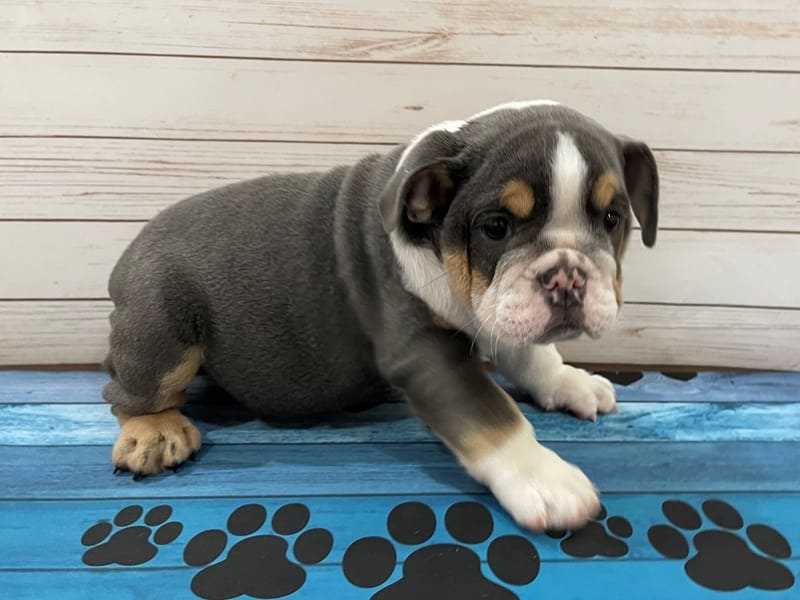
Once you have a list of potential breeders, schedule visits to their facilities. This will give you an opportunity to see the living conditions of the dogs and the overall cleanliness of the breeding environment. A reputable breeder will have clean and well-maintained facilities.
3. Meet the Dogs
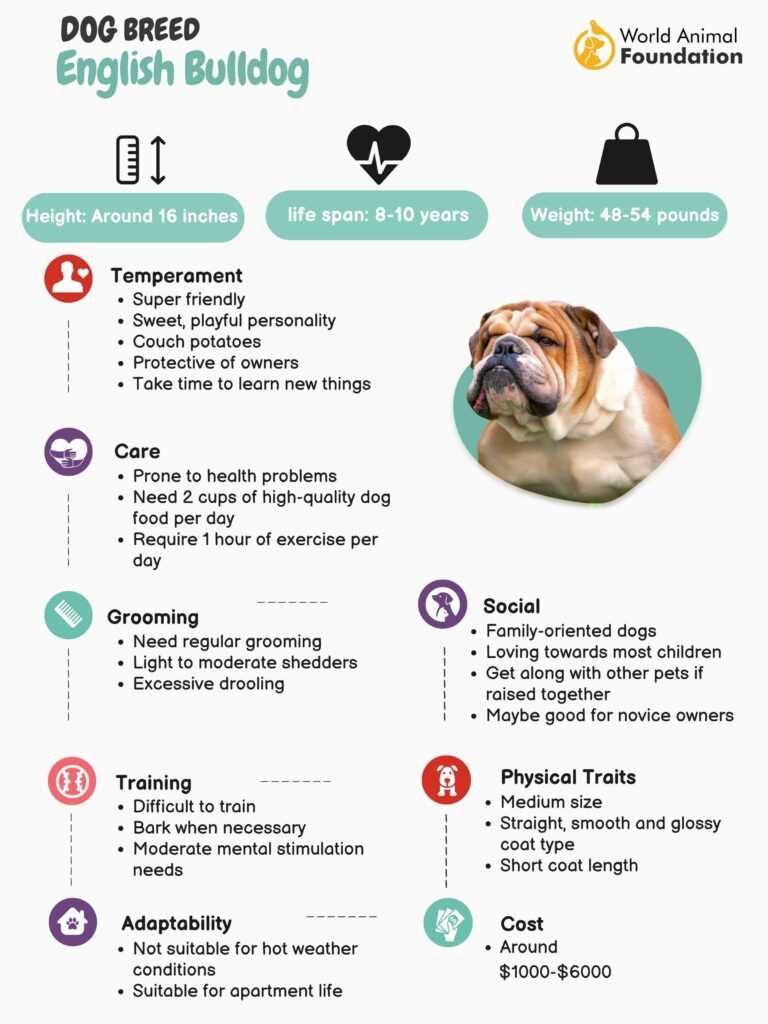
During your visit, spend time interacting with the dogs. Observe their behavior and temperament. A reputable breeder will have well-socialized and friendly dogs. They will also allow you to meet the puppy’s parents to assess their health and temperament.
4. Health Testing
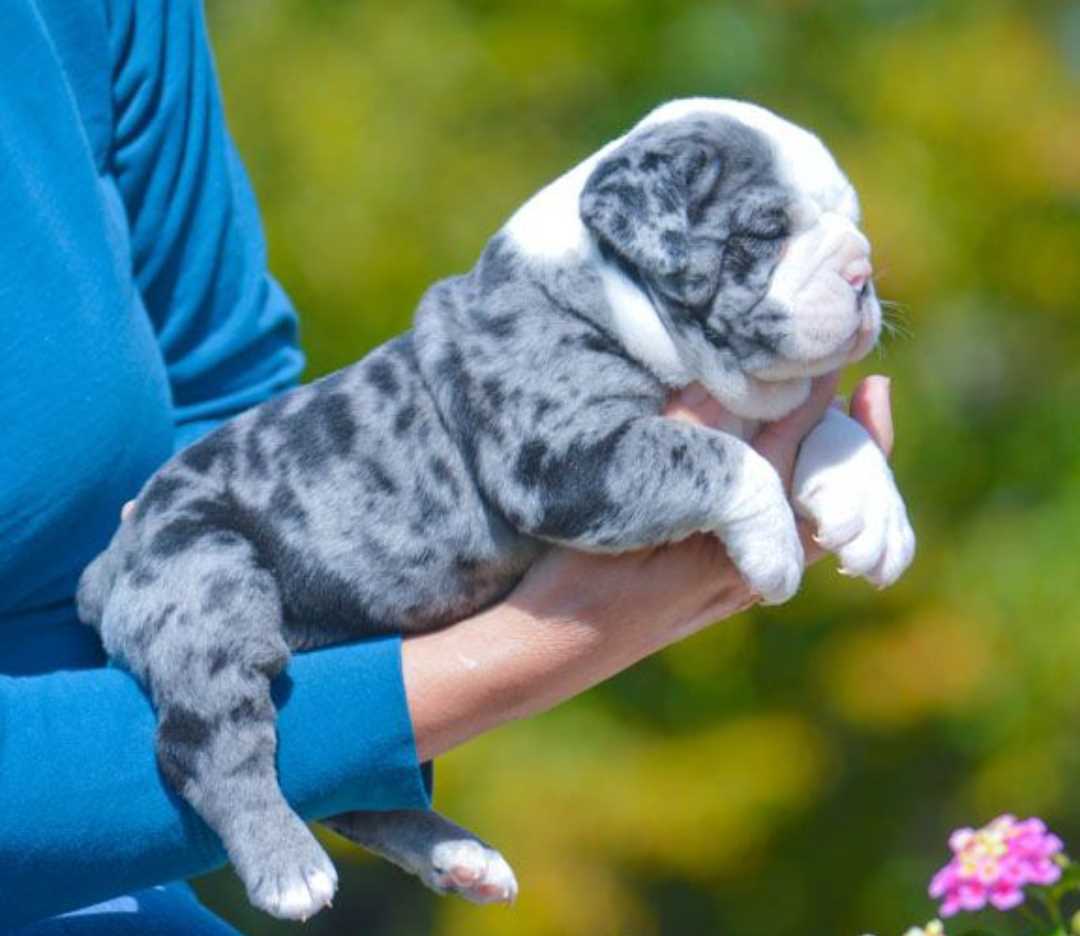
Ask the breeder about the health testing they perform on their breeding dogs. A reputable breeder will conduct various health tests to ensure that their dogs are free from genetic diseases and other health issues commonly found in Bulldogs. They should be able to provide you with the necessary health certificates.
5. Contracts and Guarantees

A reputable breeder will provide you with a written contract that outlines the responsibilities of both the breeder and the buyer. This contract should include health guarantees, return policies, and any other important terms and conditions. Make sure you thoroughly read and understand the contract before making a commitment.
By following these guidelines, you can find a reputable breeder who will provide you with a healthy and well-bred Blue English Bulldog puppy. Remember, a responsible breeder cares about the well-being of their dogs and will be there to support you throughout your Bulldog’s life.
Understanding the Pedigree
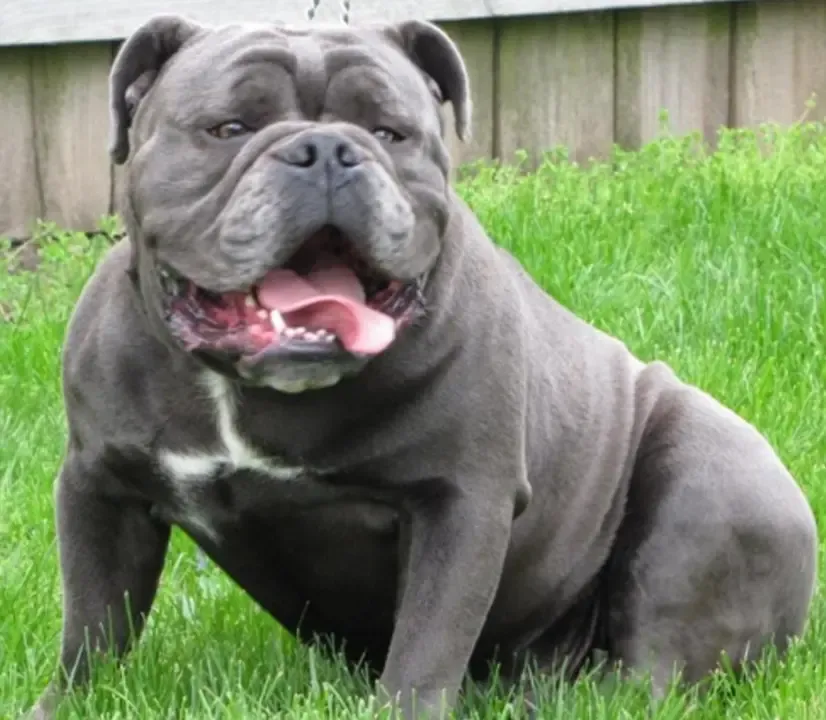
When it comes to Blue English Bulldogs, understanding the pedigree is crucial. The pedigree is a record of the dog’s ancestry, showing the lineage and genetic history. It provides valuable information about the dog’s parents, grandparents, and even great-grandparents.
A reputable breeder will always provide a detailed pedigree for their Blue English Bulldog puppies. This information allows potential owners to trace the lineage and determine if the dog comes from healthy and well-bred stock. It also helps in predicting the dog’s temperament, health issues, and physical characteristics.
The pedigree typically includes the registered names of the dog’s parents, their registration numbers, and any titles or awards they have earned. It may also include information about health screenings, such as hip and elbow evaluations, as well as genetic testing for common Bulldog health issues.
By studying the pedigree, potential owners can assess the quality of the breeding program and the breeder’s commitment to producing healthy and genetically sound Blue English Bulldogs. They can also identify any potential health concerns that may be present in the dog’s lineage.
It’s important to note that not all Blue English Bulldogs will have a pedigree. Some may be mixed breeds or come from less reputable breeders who don’t provide proper documentation. In such cases, it’s crucial to thoroughly research the breeder and ask for as much information as possible about the dog’s background.
Overall, understanding the pedigree is an essential part of responsible dog ownership. It allows potential owners to make informed decisions and ensures that they are getting a Blue English Bulldog with a healthy genetic background.
| Benefits of Understanding the Pedigree: |
|---|
| – Helps determine the dog’s genetic health |
| – Predicts the dog’s temperament and physical characteristics |
| – Assesses the quality of the breeding program |
| – Identifies potential health concerns in the dog’s lineage |
Taking Care of Blue English Bulldog Puppies
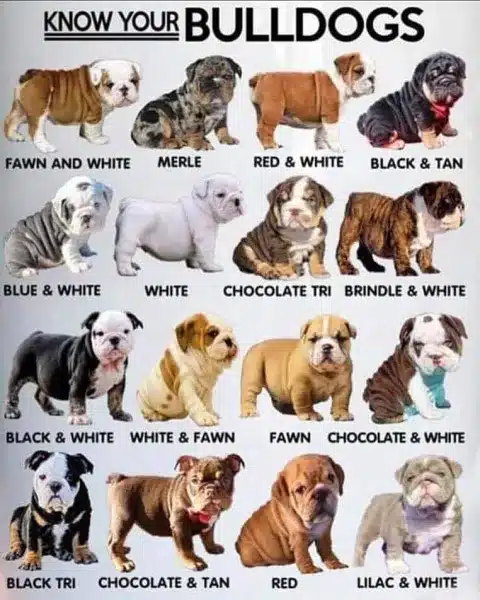
When it comes to taking care of blue English bulldog puppies, there are a few important things to keep in mind. These adorable little pups require special attention and care to ensure they grow up healthy and happy.
First and foremost, it’s crucial to provide them with a balanced and nutritious diet. Blue English bulldogs have specific dietary needs, so it’s essential to consult with a veterinarian or a breeder to determine the best food for your puppy. Make sure to feed them high-quality dog food that is specifically formulated for bulldog puppies.
In addition to a proper diet, regular exercise is also important for blue English bulldog puppies. While they may not be the most active breed, they still need daily walks and playtime to keep them healthy and prevent obesity. However, it’s important to avoid overexertion, especially in hot weather, as bulldogs are prone to overheating.
Grooming is another aspect of caring for blue English bulldog puppies. Their short, dense coats require regular brushing to remove loose hair and keep their skin healthy. It’s also important to clean their facial folds regularly to prevent infections. Additionally, their nails should be trimmed regularly to avoid overgrowth and discomfort.
Blue English bulldogs are known for their sensitive skin, so it’s crucial to use gentle and hypoallergenic grooming products. Avoid harsh shampoos or soaps that can irritate their skin and opt for products specifically designed for sensitive skin.
Regular veterinary check-ups are essential for blue English bulldog puppies. They should receive all necessary vaccinations and be examined for any potential health issues. Regular check-ups also provide an opportunity to discuss any concerns or questions you may have with the veterinarian.
Lastly, it’s important to provide a safe and comfortable living environment for blue English bulldog puppies. Make sure they have a cozy bed or crate where they can rest, along with plenty of toys to keep them entertained. Bulldogs are known for their love of chewing, so it’s important to provide them with appropriate chew toys to prevent destructive behavior.
Blue English Bulldogs as Pets
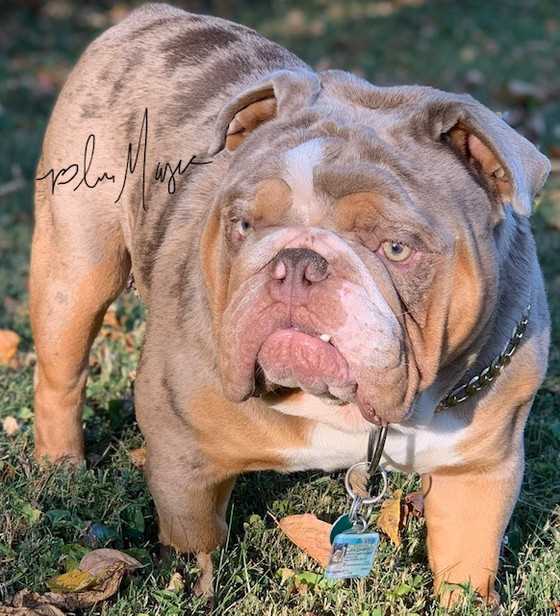
Blue English Bulldogs make excellent pets for a variety of reasons. Their unique blue coat color sets them apart from other English Bulldogs, making them a standout choice for those looking for a distinctive and eye-catching pet.
One of the key characteristics of Blue English Bulldogs is their friendly and affectionate nature. They are known to be extremely loyal and devoted to their owners, making them wonderful companions for individuals and families alike. Their gentle and patient temperament makes them great with children, and they often become protective of their family members.
Despite their sometimes intimidating appearance, Blue English Bulldogs are actually quite gentle and docile. They are not typically aggressive and are known for their calm and relaxed demeanor. This makes them well-suited for apartment living or homes with limited space.
Blue English Bulldogs are also relatively low maintenance pets. They do not require excessive exercise and are content with moderate daily walks and playtime. They are prone to weight gain, so it is important to monitor their diet and ensure they receive regular exercise to keep them healthy and in shape.
When it comes to training, Blue English Bulldogs can be a bit stubborn at times, but with patience and consistency, they can be trained effectively. They respond well to positive reinforcement and rewards-based training methods. Early socialization is also important to ensure they grow up to be well-behaved and confident dogs.
It is worth noting that Blue English Bulldogs may have certain health issues associated with their coat color. They are more prone to skin allergies and sensitivity to the sun, so it is important to provide them with proper care and protection. Regular grooming and regular vet check-ups are essential to keep them healthy and address any potential health concerns.

Tyler Newsom, a canine enthusiast, is passionate about bulldogs and their coat care. With years of experience and dedication, he shares his expertise to help bulldog owners maintain their beloved pets’ fur health and vitality through practical tips and advice.
